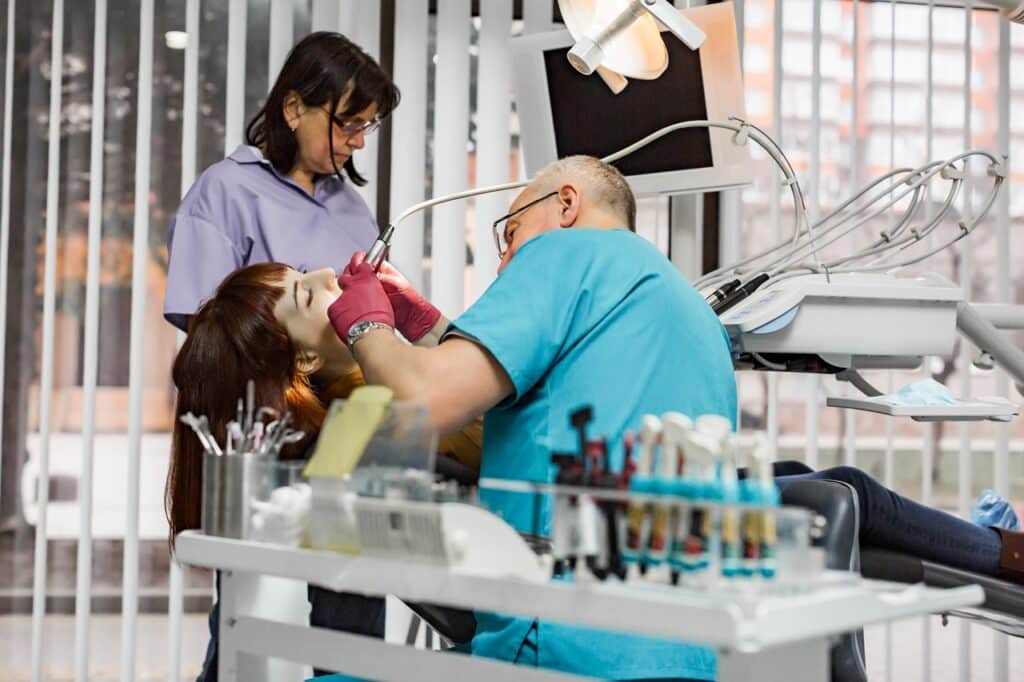The mere thought of visiting a dental office can induce stress and anxiety for many individuals. Dental phobia, or odontophobia, can cause people to avoid seeking the necessary dental care they require, ultimately leading to poor oral health and even more significant dental problems in the future. At our dental office, we understand the importance of addressing patients’ fears and ensuring a comfortable and stress-free experience. This is where sedation dentistry comes into play.
Sedation dentistry involves using medication to help patients relax during dental procedures. It enables those with dental anxiety or other difficulties to receive the treatment they need in a comfortable and relaxed environment, making the entire experience significantly more pleasant. Our primary goal is to provide high-quality dental care to our patients, and offering sedation options is a crucial aspect of achieving this.
In this comprehensive guide, we will demystify the world of sedation dentistry by exploring its various types, benefits, and safety measures. You will gain a better understanding of the sedation options available to you, enabling you to make an informed decision about the best course of action for your dental needs. We will discuss the different levels of sedation that range from minimal to deep sedation, detailing how the procedures work and the medications involved. Furthermore, we will highlight the benefits of opting for sedation dentistry and discuss the stringent safety precautions we adhere to for your protection and peace of mind.
Arming yourself with valuable information about sedation dentistry is the first step towards overcoming your dental fears and ensuring excellent oral health. At our dental office, we are dedicated to providing the best care for our patients, and our skilled team is ready to guide you through every step of your dental journey. Reach out to us at Pickering Dental Services to find out more about our sedation dentistry options and how they can enhance your dental experience.
Types of Sedation Dentistry
There are four primary levels of sedation dentistry – minimal, moderate, deep, and general anesthesia – each corresponding to a different degree of relaxation and consciousness. Understanding the distinctions between these levels of sedation can help you determine the best option for your unique dental needs.
1. Minimal Sedation
Minimal sedation, typically achieved through the use of nitrous oxide or “laughing gas,” allows patients to remain conscious and fully aware of their surroundings. This level of sedation helps alleviate mild anxiety and enables patients to feel more relaxed throughout their dental procedure. The effects of minimal sedation wear off quickly, allowing patients to resume their daily activities shortly after treatment.
2. Moderate Sedation
Moderate sedation, also known as conscious sedation, is administered either orally or intravenously. Patients remain awake but enter a deeper state of relaxation, often resulting in slurred speech and potential memory gaps. Although conscious, patients may not remember much of their dental procedure. This level of sedation is ideal for those with moderate dental anxiety or those undergoing more invasive treatments.
3. Deep Sedation
Deep sedation can be achieved through intravenous medications and places patients at the edge of consciousness. While not completely unconscious, patients may have little to no recollection of the procedure. It’s common for patients to feel drowsy and experience an extended recovery period. Deep sedation is typically reserved for more extensive dental procedures or for patients with severe anxiety or difficulty remaining still.
4. General Anesthesia
General anesthesia renders patients completely unconscious for the duration of their dental procedure. This form of sedation is typically reserved for oral surgeries or extensive dental treatments. Patients under general anesthesia require close monitoring and often need a longer recovery period before they can safely return home.
Benefits of Sedation Dentistry
Sedation dentistry offers numerous benefits for both patients and dental professionals, including:
1. Anxiety Relief
One of the primary advantages of sedation dentistry is anxiety relief. Dental anxiety can often be a significant barrier to receiving necessary dental care. By offering patients a comfortable and stress-free environment, sedation dentistry can help overcome this obstacle and ensure optimal oral health.
2. Improved Patient Cooperation
Dental treatments can be challenging for patients who have difficulty remaining still, such as those with cognitive or physical impairments. Sedation dentistry can help improve patient relaxation and cooperation, leading to a smoother treatment process.
3. Pain Reduction
Sedation dentistry can provide additional pain relief for patients undergoing dental procedures. While local anesthesia is applied to numb the treatment area, sedation can help further alleviate discomfort and create a more enjoyable dental experience.
4. Efficiency
With sedation dentistry, dental professionals can perform treatments more efficiently due to the increased patient cooperation. This can reduce the number of appointments needed, saving both time and money for the patient.
Safety Measures in Sedation Dentistry
At our dental office, patient safety is our top priority. We adhere to strict safety protocols to ensure your well-being during your sedation dentistry appointment, such as:
1. Thorough Patient Assessment
Before administering sedation, a comprehensive review of your medical history, current medications, and any allergies is essential. This allows our dental practitioners to determine the safest and most effective sedation method for your needs and helps to minimize the risk of potential complications.
2. Monitoring and Equipment
During your sedation dentistry appointment, our team of skilled professionals will continuously monitor your vital signs and levels of sedation. This may include monitoring your blood pressure, oxygen levels, heart rate, and respiration, ensuring a safe and controlled procedure.
3. Emergency Preparedness
Our dental office is equipped with emergency medications and equipment to manage any unforeseen complications that may arise during your sedation dentistry appointment. Our team is also well-trained in emergency procedures, ensuring your safety at all times.
Conclusion
Pickering sedation dentistry offers a comfortable and relaxed solution for patients with dental anxiety or those undergoing extensive dental procedures. By understanding the various levels of sedation and the specific benefits and safety precautions involved, you can make an informed decision about the most suitable sedation method for your unique dental needs.
At Pickering Dental Services, our experienced team is committed to providing top-notch dental care while ensuring your safety and comfort. If you’re interested in exploring sedation dentistry options, don’t hesitate to contact us for a consultation. We’re here to help you achieve a healthy smile in the most comfortable and enjoyable manner.



